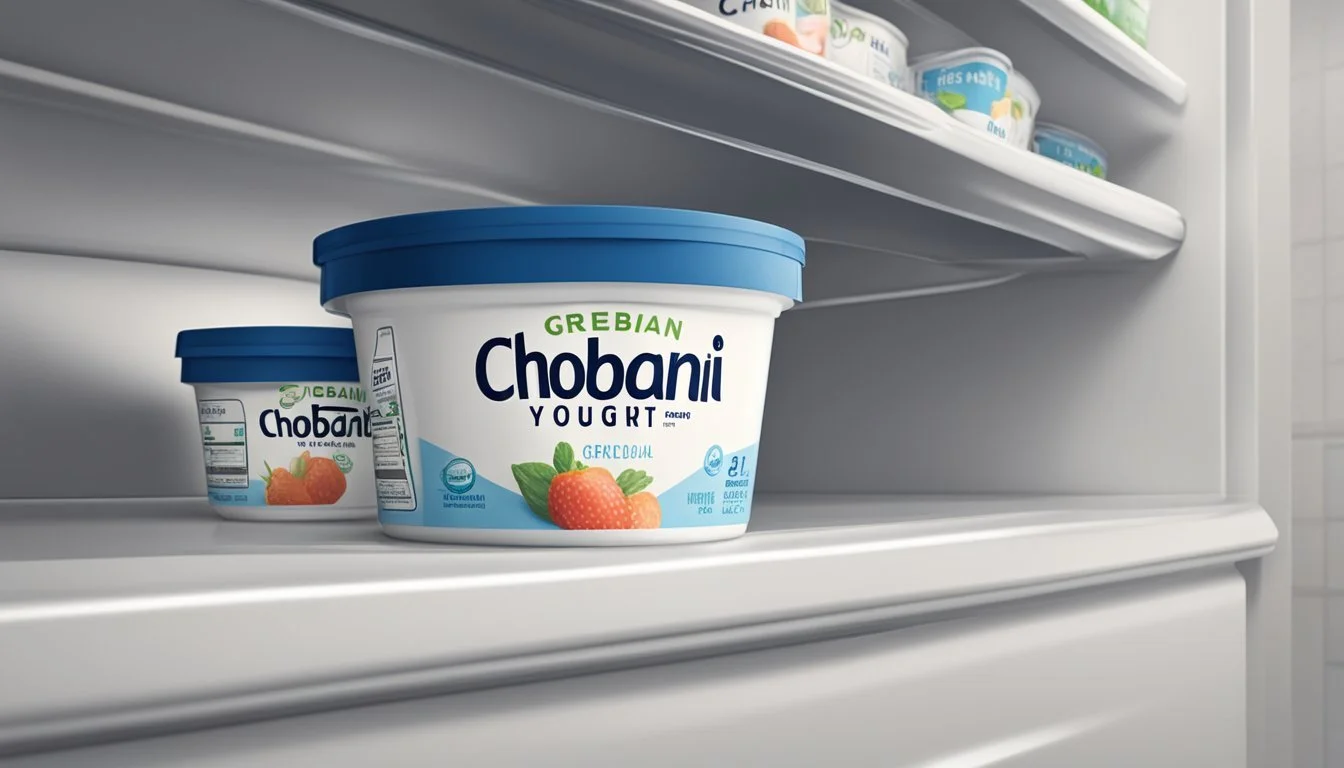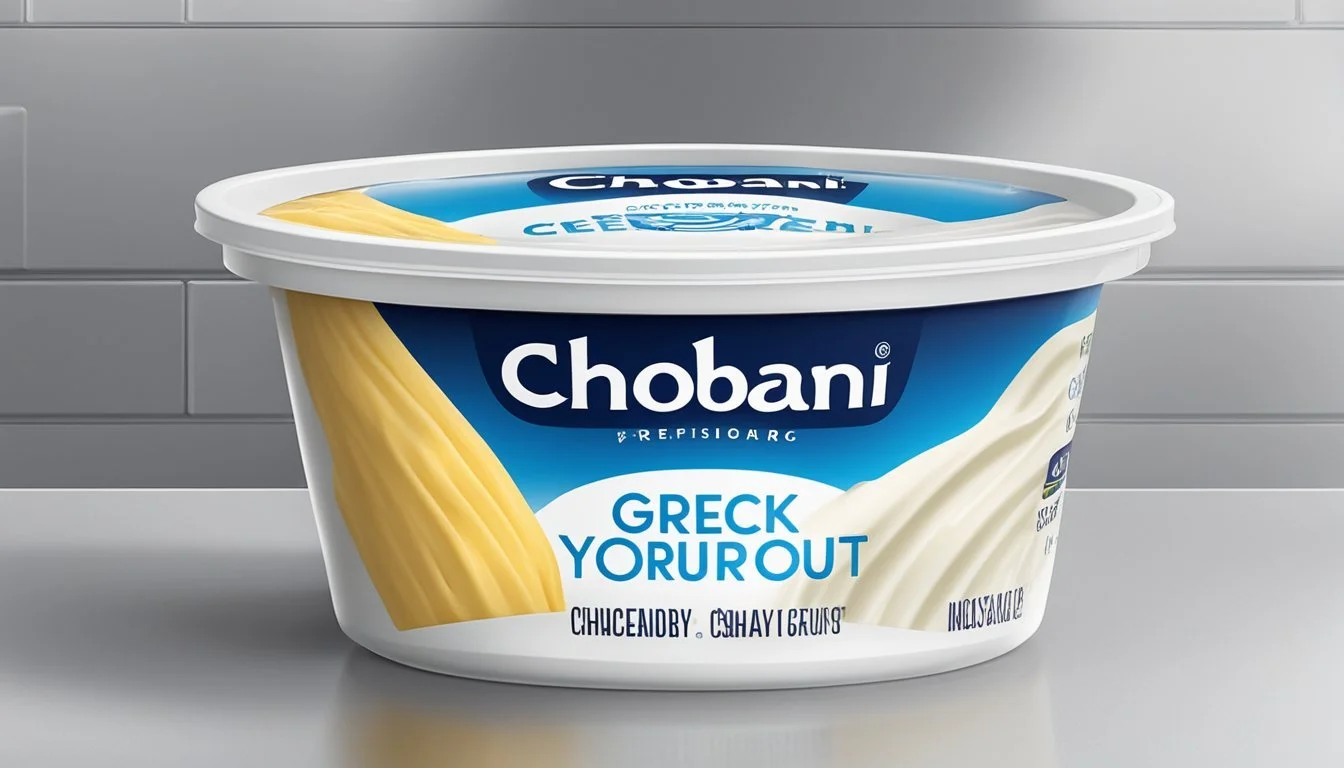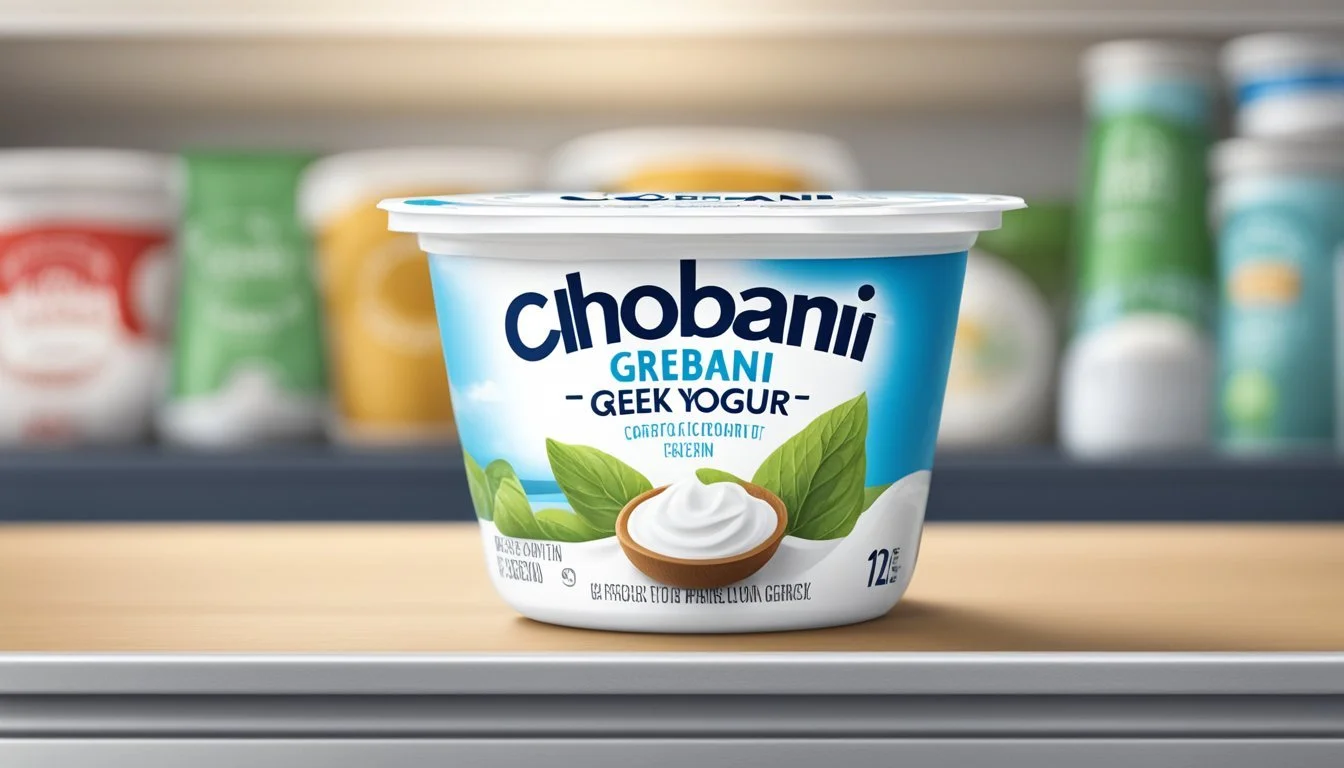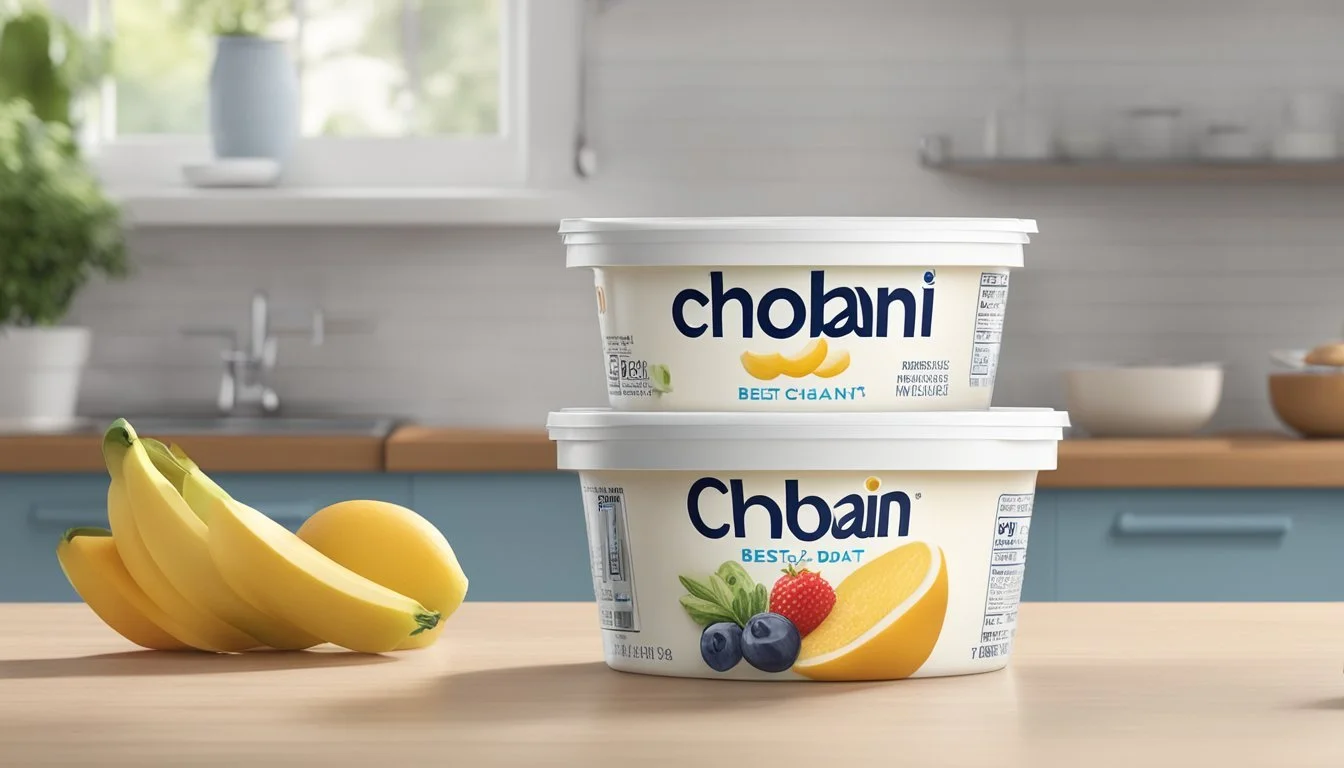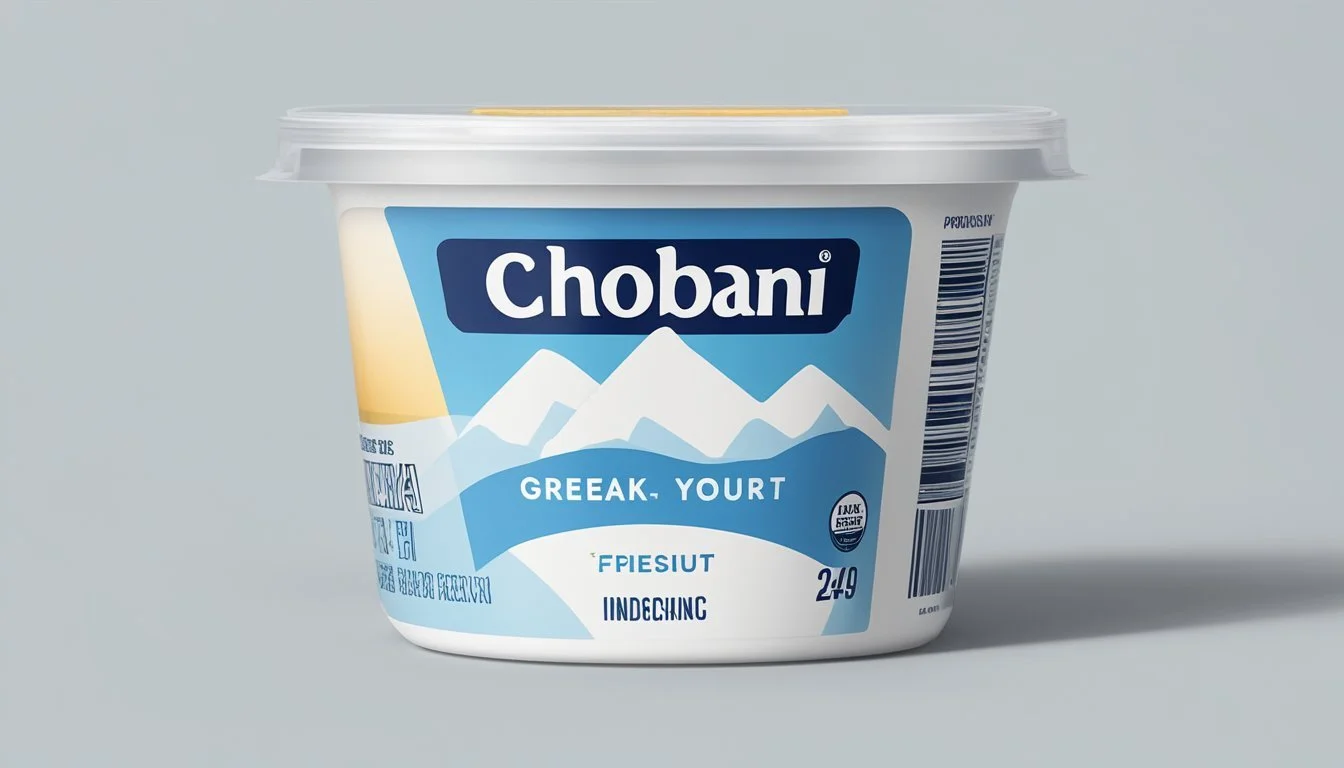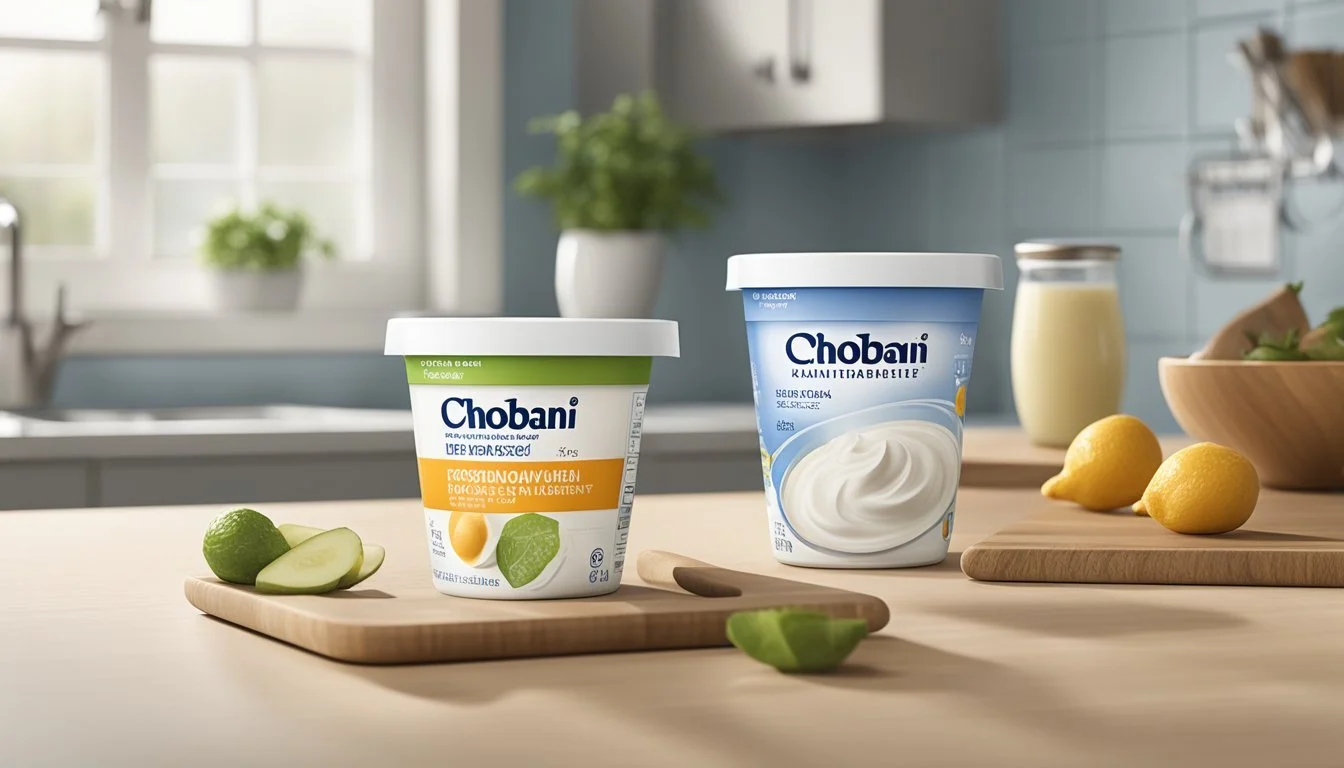How Long Does Chobani Greek Yogurt Last?
Shelf Life and Storage Tips
When considering the shelf life of Chobani Greek yogurt, consumers can expect a certain level of longevity due to the product's nature and the company's quality standards. Greek yogurt, known for its thicker consistency and higher protein content, typically has a longer shelf life than traditional yogurt. Chobani ensures that their Greek yogurt, when unopened and stored properly in the refrigerator at or below 40°F (4°C), can last beyond the printed "use by" date. It is often safe to eat for a couple of weeks past this date, though the taste and texture may begin to decline gradually over time.
Storage conditions play a significant role in the longevity of Chobani Greek yogurt. Consumers should keep the yogurt refrigerated consistently, and once opened, it should be eaten promptly for the best quality. For multi-serve containers, securing the lid tightly before re-refrigerating helps maintain its freshness. While Chobani Greek yogurt can last up to three weeks, any signs of spoilage, such as an off smell, discoloration, or mold, indicate that the product should not be consumed.
In any case, always pay close attention to the yogurt's freshness indicators, including the "use by" date and the product's look, smell, and taste. Erring on the side of caution is advisable to ensure both safety and enjoyment of the yogurt.
Understanding Greek Yogurt
Greek yogurt is a thick, creamy dairy product known for its rich texture and high protein content. Compared to traditional yogurt, Greek yogurt is strained multiple times to remove whey and lactose, leaving behind a denser and more concentrated form.
The protein levels in Greek yogurt make it a popular choice among health enthusiasts. Its protein content is often double that of regular yogurts—providing about 10-20 grams of protein per 6-ounce serving. This high protein content contributes to muscle repair and satiety, which can aid in weight management and workout recovery.
As a dairy product, Greek yogurt also contains essential nutrients such as calcium, vitamin B-12, and probiotics. These natural ingredients are beneficial for bone health, digestive wellness, and immune function.
When incorporating Greek yogurt into a diet, it is essential to choose variants with no added sugars or artificial flavors to fully benefit from its natural goodness. Here's a brief overview of Greek yogurt's nutrient profile per serving:
Protein: Approximately 15-20 grams
Calcium: About 20% of the daily recommended intake
Vitamins: B-12, B-6, and riboflavin
Greek yogurt can serve as a versatile ingredient in various dietary preferences, acting as a healthier alternative to sour cream, mayo, or creamy dressings. Whether enjoyed plain or with fruits and nuts, Greek yogurt remains a staple in balanced diets that prioritize wholesomeness and nutrition.
Shelf Life Fundamentals
Understanding the shelf life of Chobani Greek yogurt involves recognizing the role of expiration and use-by dates.
Expiration Date
The expiration date indicates the approximate time frame within which the yogurt should retain its optimal quality. For Chobani Greek yogurt, this date is a helpful guide for consumption while the product is at its best taste and texture. A sealed container stored properly in the refrigerator at or below 40°F (4°C) can typically last beyond this date, often remaining acceptable for consumption for an additional one to three weeks.
Sell by Date Versus Use-By Date
Sell by date: Retailers use this date for inventory management. It's not a safety date for consumers but rather indicates when the product should be sold or removed from shelves.
Use-by date: Reflects the manufacturer's estimate of when the product will be past its peak quality. For Chobani Greek yogurt, the use-by date is critical. Once past this date, the product might experience changes in taste and texture, though it may still be safe to eat if there are no signs of spoilage.
It's important to note that while these dates are helpful indicators, they are not exact science. Consumers should rely on their senses–smell, taste, and sight—for the final judgement on whether the product is still good to consume.
Storage Guidelines
Proper storage is crucial for maintaining the freshness and quality of Chobani Greek yogurt. Below are the specific guidelines for storing unopened and opened yogurt, as well as tips for freezer storage.
Unopened Yogurt
In the Refrigerator: An unopened container of Chobani Greek yogurt should be stored in the refrigerator at or below 40°F (4°C). This ensures that the yogurt remains safe to consume. Typically, unopened yogurt can last:
Dairy-based: Up to 2 weeks past the "use by" date
Non-dairy: Up to 3 weeks past the expiration date
For optimal freshness, one should store the yogurt at the back of the fridge where temperature fluctuations are minimized.
Opened Yogurt
Once opened, it is advisable to consume Chobani Greek yogurt immediately. If there are leftovers, they should be stored in an airtight container to protect them from air and moisture. The opened yogurt should be eaten within:
Dairy and Non-dairy: 7 days of opening
For multi-serve offerings, securely resealing with the plastic lid before returning to the fridge is key.
Freezer Storage
While not recommended for quality reasons, freezing Chobani Greek yogurt is an option for extending its shelf life. To freeze yogurt properly:
Place yogurt in an airtight container.
Store for up to 2 months for best quality.
Thawed yogurt may separate and have a different texture, but it is still safe to eat. It may be suitable for use in smoothies or cooking.
Preservation Techniques
Proper storage is crucial for extending the longevity of Chobani Greek yogurt. Here are key practices one should follow:
Refrigeration:
Keep at or below 40°F (4°C).
Store away from the fridge door to avoid temperature fluctuations.
After Opening:
Seal tightly with the original lid or plastic wrap.
Consume within one to two weeks.
Freezing:
Freeze before the 'use by' date.
Thaw in the refrigerator and consume quickly.
Using Preservatives:
Chobani Yogurt typically does not contain artificial preservatives.
Observe the 'use by' date to gauge freshness.
Notable Considerations:
Reducing air exposure preserves texture.
Avoiding cross-contamination maintains quality.
Remember, these techniques do not stop spoilage indefinitely but can help maintain quality within a safe consumption window.
Quality and Food Safety
When determining the longevity of Chobani Greek yogurt, quality control and food safety are paramount. Consumers should be attentive to visible indicators of spoilage and aware of potential health risks associated with consuming spoiled yogurt.
Identifying Spoiled Yogurt
To maintain quality and ensure safety, it’s critical that consumers recognize signs of spoilage in yogurt. The cues include:
Appearance: Mold or an unusually watery consistency may indicate spoilage.
Smell: A sour or unusual odor is a red flag.
Taste: Although not recommended, a taste that is significantly more sour than the typical tanginess of Greek yogurt can suggest it is no longer fresh.
Health Risks
Consuming spoiled Chobani Greek yogurt carries health risks, such as foodborne illness. Symptoms to be aware of include:
Gastrointestinal distress: Nausea, vomiting, and diarrhea are common symptoms.
Cross-contamination: Spoiled yogurt can contaminate other foods, increasing the risk of food poisoning.
Ensuring yogurt is stored properly and consumed by the expiration date helps maintain quality and food safety, preventing illness.
Spoilage Signs and Prevention
When assessing whether Chobani Greek yogurt has spoiled, one should look for visual changes, odors, and textural differences that indicate spoilage. Understanding how to identify and prevent spoilage can ensure safety and enjoyment of the yogurt.
Visual and Olfactory Cues
An unmistakable sign of spoiled yogurt is the presence of mold growth. Mold can appear as spots or cover the surface and should not be ignored because it indicates significant bacterial activity. Discoloration can also occur, with the yogurt taking on a pink, orange, or green hue, which is not its natural color. The smell is another reliable indicator; fresh yogurt should have a clean, slightly tangy scent. An off odor, which could be described as sour, rancid, or strongly unpleasant, is a clear sign that the yogurt should not be consumed.
Texture and Flavor Loss
The texture of fresh Chobani Greek yogurt is smooth and creamy. If the yogurt has become unusually thick, gooey, or developed a watery layer on top, these can be signs of spoilage. Such changes suggest that the protein structure of the yogurt has been compromised, often due to harmful bacteria. Similarly, the flavor should be tangy yet pleasant; any sour or bitter taste that is more pronounced than usual indicates a loss in quality and potential spoilage.
Contamination Sources
Chobani Greek yogurt can become a breeding ground for bacteria if not stored properly. Yogurt should always be kept refrigerated at or below 40°F (4°C) and be sure to close the lid tightly after each use to prevent contamination. Direct contact with utensils that have been used with other food can introduce harmful bacteria and accelerate spoilage. It is also vital to consume the yogurt within one to two weeks after opening to minimize the risk of spoilage, even if the best by date has not yet passed.
Usage and Recipes
Chobani Greek yogurt can be a versatile ingredient in the kitchen, lending its creamy texture to a range of dishes while also serving as a nutritious option for snacks and breakfast.
Cooking with Greek Yogurt
In cooking, Greek yogurt serves as a healthier alternative to ingredients like sour cream and mayonnaise. It can be used in baked goods to add moisture and a slight tang, or in sauces and salad dressings to offer a creamy consistency without excess fat. When one cooks with Greek yogurt, it's important to gradually introduce it into hot dishes to prevent curdling. Greek yogurt can also be used as a topping for dishes to add a hint of creaminess. Here is how to incorporate it into various recipes:
Baked Goods: Replace part of the butter or oil in recipes with Greek yogurt to reduce calories and add protein.
Sauces and Dressings: Mix Greek yogurt into vinaigrettes or use as a base for creamy dressings and dips.
Smoothies and Other Uses
Greek yogurt is a staple ingredient for smoothies, contributing to their creaminess and boosting their protein content. When making smoothies, one can blend fresh or frozen fruits with Greek yogurt for a nutritious breakfast or snack option. Chobani Greek yogurt can also be incorporated into snacks by pairing it with fruit, chocolate shavings, or milk for a quick and satisfying treat. Its applications also include:
Smoothies: Combine Greek yogurt with fruits, honey, or nut butters for a well-rounded smoothie.
Snack Parfaits: Layer Greek yogurt with granola and fresh fruit for a healthy snack.
Toppings: Use Greek yogurt as a topping for soups, tacos, or baked potatoes.
While adding Greek yogurt to one's diet, it's crucial to ensure its freshness. Greek yogurt that has gone bad typically exhibits signs such as a sour smell, a change in texture, or liquid whey separation on the surface. If Greek yogurt appears curdled or has an off scent, it should be discarded for safety.
By using Chobani Greek yogurt in diverse culinary applications, anyone can enhance the nutritional value and taste of their meals, from savory dishes to sweet desserts and energizing beverages.
Safety After Opening
Once Chobani Greek yogurt is opened, its shelf life and safety can be influenced by various factors. For optimal food safety, it's essential to store the yogurt at or below 40 degrees Fahrenheit. If stored correctly, opened Chobani yogurt typically remains safe to consume for one to two weeks.
Storage Practices:
Immediately refrigerate after opening.
Use a clean spoon each time to avoid introducing bacteria.
Signs of Spoilage: Consumers should inspect the yogurt before each use for:
Unpleasant odors
Off-flavors
Visible mold
Excessive whey on the surface*
*A small amount of whey separation is natural, but excessive liquid may indicate spoilage.
Inclusion of fruit or other mix-ins with the yogurt may shorten the safe consumption period due to quicker spoilage rates. Always check for signs of spoilage on fruit mix-ins.
Health Implications: If one consumes spoiled yogurt, symptoms like nausea, diarrhea, and vomiting can occur. To prevent these risks, adhere strictly to hygiene practices and proper food storage guidelines.
Key Recommendations:
Consume within the recommended timeframe.
Ensure the storage temperature is consistently maintained.
Always use clean utensils to maintain hygiene.
Discard any yogurt that shows signs of spoilage or has been stored improperly.
Considerations for Sensitive Groups
When it comes to Chobani Greek yogurt and sensitive groups such as infants, children, and individuals with compromised immune systems, extra care should be taken. For infants, infant formula is specifically designed to meet their dietary needs, and yogurt is not generally recommended for babies under the age of 6 months. Parents should consult a pediatrician before introducing yogurt into their infant's diet, usually after solid foods have been established.
For children who are older, Chobani Greek yogurt could be a valuable source of nutritional content, including probiotics, which are beneficial for gut health. However, they may be more susceptible to foodborne illnesses, so it's crucial to ensure that the yogurt consumption is within the safe time frame after opening.
Here is a simple guide for storage:
Immediately refrigerate at 40°F or lower
Consume opened yogurt within 1-2 weeks
If individuals belong to sensitive groups, they should adhere strictly to the "use by" dates and properly store yogurt to maintain its quality and safety. It's also advisable to:
Inspect the yogurt container for any signs of damage
Smell and visually inspect the yogurt before consumption
Discard any yogurt that has an off smell, taste, or appearance
In summary, while Chobani Greek yogurt offers nutritional benefits, those with a higher risk should consume with caution and follow proper food safety guidelines to reduce the risk of foodborne illness.
Beyond the Fridge
When Chobani Greek yogurt is not refrigerated, its storage lifespan is significantly reduced. Consumers need to be aware of the risks and proper storage methods to ensure food safety and quality.
Room Temperature
At room temperature, Chobani Greek yogurt should not be left out for more than two hours. The proliferation of bacteria accelerates at temperatures between 40°F (4°C) and 140°F (60°C), rendering the yogurt unsafe to consume. Therefore, one should keep the yogurt in an airtight container if it is to be kept out temporarily, although refrigeration is always preferable to maintain safety and freshness.
Travel and Portability
When considering travel or portability, maintaining the cold chain is critical. For moving Chobani Greek yogurt without refrigeration:
Use a cooler with ice packs to keep it below 40°F (4°C).
Do not keep the yogurt out for longer than the advised two hours.
Upon reaching the destination, place it in a refrigerator as soon as possible to preserve its shelf life.
Understanding Date Labels
Determining the safety and quality of Chobani Greek yogurt involves interpreting date labels accurately. The reader should understand that "Best By" and expiration dates provide guidance on peak quality rather than strict safety cut-offs.
“Best By” Date Interpretation
The "Best By" date on food products, including Chobani Greek yogurt, suggests when the product is expected to be at its best flavor and quality. It is not an expiration date. After this date, the yogurt's taste and texture might slightly deteriorate, but it can still be consumed if it's been stored properly and shows no signs of spoilage. The presence of lactic acid in yogurt acts as a natural preservative, which can extend the life of the yogurt beyond this date when kept refrigerated.
USDA Guidelines
According to the USDA's Food Safety and Inspection Service, federal law does not require expiration dates on food products, except for infant formula. Therefore, "Best By" dates are voluntarily provided by manufacturers. The Consumers should use them as a reference point rather than a definitive indicator of food safety. To ensure the highest standards of food safety, Chobani yogurt should be stored unrefrigerated for minimal time before consumption. If the yogurt has been kept at or below 40°F (4°C), it will generally remain safe to consume past the "Best By" date, as long as it has been handled correctly and shows no signs of spoilage.
Ways to Reduce Food Waste
When considering Chobani Greek yogurt, it's essential to understand that food waste can be minimized with proper storage and attentiveness to food safety. Manufacturers typically indicate an expiration date to guarantee freshness, but with yogurt, there's often some leeway.
Before Opening: Store yogurt in the refrigerator at a constant temperature, preferably below 40°F (4°C) to extend its shelf life. An unopened yogurt can retain quality beyond its expiration date, usually safe for consumption within an additional 7 to 10 days, although one should always rely on sensory checks - a sour smell or taste and curdling texture are indicators it should be discarded.
After Opening: An opened container of Chobani Greek yogurt should be consumed within one to two weeks. To maintain freshness, tightly seal the yogurt after every use and keep it refrigerated. This limits exposure to bacteria that can accelerate spoilage.
Here is a quick reference table for yogurt storage:
Condition Storage Recommendation Unopened Yogurt Up to 10 days past expiration date Opened Yogurt Consume within 1 to 2 weeks
Visual Inspection: Look for signs such as lumps or curdling texture before consuming, as they may indicate spoilage.
Mindful Consumption: Planning and buying what can be realistically consumed helps to limit food waste. If nearing expiration and unable to consume, consider using the yogurt in recipes like smoothies or baked goods, where slight changes in texture are less noticeable.
Remember, these practices do not only apply to Chobani Greek yogurt but are general good habits to reduce food waste while keeping food safety in mind.
Additional Resources
To assist consumers in maximizing the shelf life of their perishable products, such as Chobani Greek yogurt, several resources offer detailed guidelines and advice. These resources are especially useful for understanding the nuances of dairy product preservation.
FoodKeeper App
The FoodKeeper App, developed by the USDA's Food Safety and Inspection Service, is a comprehensive tool for consumers. It provides valuable information on how to properly store food and beverages to maximize their freshness and quality. The app includes data for various types of foods, including dairy products. Users can learn the recommended storage times for items like Greek yogurt and can receive notifications about food safety recalls.
Consumer Hotlines
For personalized guidance, consumers can contact consumer hotlines. Many food manufacturers, including Chobani, provide hotlines or help lines where individuals can ask about product safety, expiration, and proper storage conditions. These hotlines are staffed by knowledgeable representatives who can offer specific advice on products like Chobani Greek yogurt. Additionally, the USDA operates a Meat and Poultry Hotline, which can answer broader questions about food safety.
USDA Meat and Poultry Hotline: 1-888-MPHotline (1-888-674-6854)
Nutritional Benefits
Chobani Greek yogurt is a nutritious dairy product that offers a range of health benefits. It is an excellent source of protein, which is vital for muscle repair and growth. A serving size of 227g typically contains about 15-20 grams of protein, making it a satisfying snack or a post-workout replenishment.
Greek yogurt also provides valuable probiotics, which are live bacteria that can help maintain a healthy balance in the gut. These probiotics support digestive health and can enhance the immune system.
Another key nutritional component of Chobani Greek yogurt is calcium, a mineral essential for bone health. Dairy products like Greek yogurt are considered one of the best dietary sources of calcium. Regular consumption of foods rich in calcium can help maintain strong bones and teeth.
Chobani Greek yogurt's nutritional profile also includes a low amount of saturated fat, aligning with a heart-healthy diet. Additionally, it's often produced using non-GMO ingredients, appealing to those looking for natural food choices.
The following table summarizes the key nutritional components per 8oz (227g) serving of Chobani Greek yogurt:
Nutrient Amount Protein ~15-20g Calcium Varies Probiotics Present Saturated Fat Low
By integrating Chobani Greek yogurt into one's diet, individuals can enjoy these nutritional benefits while indulging in a creamy and satisfying product.
Frequently Asked Questions
In addressing shelf life and safety, it’s crucial to understand the specific timelines and factors that influence the longevity and edibility of Chobani Greek yogurt.
Shelf Life Queries
Chobani Greek yogurt typically has a robust shelf life. An unopened container of Chobani stored in the refrigerator at or below 40°F can last beyond its 'use by' date, often up to three weeks for Greek yogurt varieties. Consumers should note that:
Shelf life might vary, and taste and texture may change over time.
Proper sealing and refrigeration are essential to maintain quality.
Opened yogurt should be consumed within one to two weeks.
Safety Concerns
Safety is a priority when consuming any dairy product. With regards to Chobani, one should be aware that:
Microorganisms can develop over time, especially if yogurt is not stored correctly.
Consuming yogurt that has surpassed the recommended period can lead to stomach cramps or other issues.
If there's an off smell, taste, or presence of mold, the product should not be consumed.
For precise information, one is advised to refer to the USDA's Food Safety and Inspection Service or similar reputable sources.

